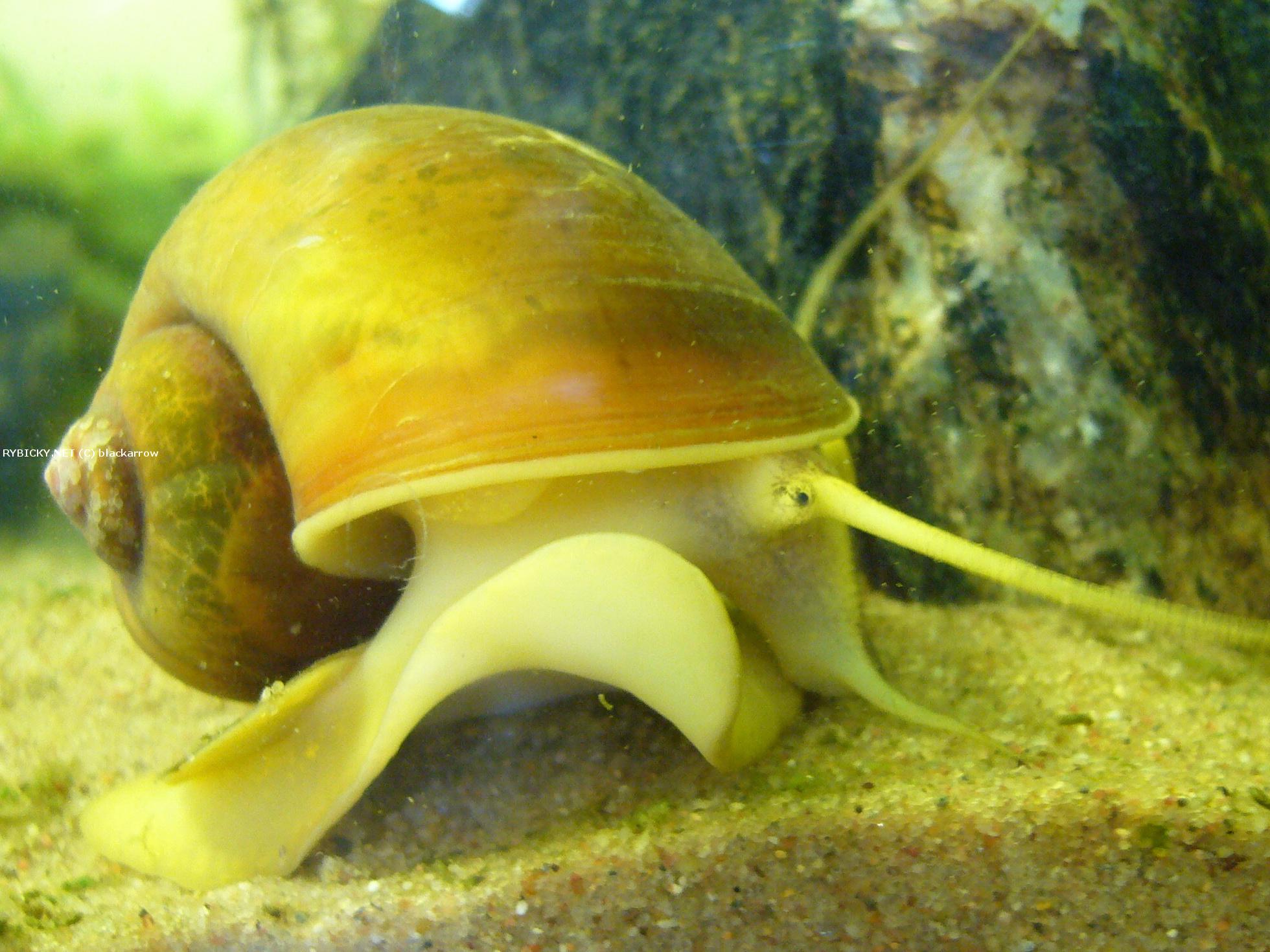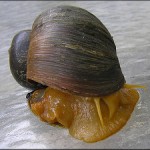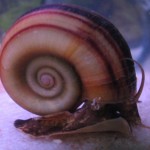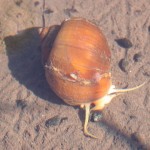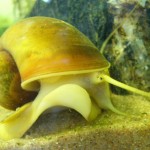Pomacea Canalicuta Facts
Scientific Classification of Pomacea Canalicuta: Pomacea Canalicuta
Kingdom of Pomacea Canalicuta: Animalia
Phylum of Pomacea Canalicuta: Mollusca
Class of Pomacea Canalicuta: Gastropoda
Order of Pomacea Canalicuta: Architaenioglossa
Family of Pomacea Canalicuta: Ampullaridae
Genus of Pomacea Canalicuta: Pomacea
Species of Pomacea Canalicuta: Pomacea Canalicuta
Pomacea Canalicuta
The Pomacea Canalicuta is a native of South American fresh water apple snail. These are popularly recognized as the aquatic gastropod mollusk that belongs to the family of Ampullaridae. They are also known as channeled apple snail. They can survive well in varied water conditions and can also survive on land.
Pictures of Pomacea Canalicuta
Take a look at the beautiful complex designs on their shells.
Some Interesting Facts about Pomacea Canalicuta
Some interesting facts about the mollusk are listed below.
- These species refer to the family of Ampullaridae and the word canalicuta refers to whorls or shells.
- These species are not gifted with strong eyesight. However, they are bestowed with a powerful sensing ability. So much so that when the female wants to mate, it is understood by the male even in the darkness.
- The species form a part of the human diet but because of their feeding on rice causing rice spoilage, they have become largely undesirable in the human population.
- These species are listed amongst the “World’s Worst Invasive Alien Species” top 100.
Range of Pomacea Canalicuta
These species mostly inhabit the parts of sub tropical and tropical South America. In the southern region of South America these species are mostly found in the parts of the Paso de las Piedras. One can even spot these species in the parts of Albama, Florida, San Diego County, Mirimar, Orlando, California, Arizona, Dominican Republic etc. Apart from South America, they are even found in parts of Brazil, Paraguay, Uruguay, Argentina, and Bolivia in the same continent. In addition to this, they are also found in parts of Asia, Philippines, Vietnam, Thailand, Hongkong, Malaysia, Cambodia, Laos and southern regions Of China. Some other places these species can be spotted are Buenos Aires in Aregentina, Taiwan, Korea, southern parts of Singapore.
Characteristics of Pomacea Canalicuta
We present a brief list of the physical features of these Pomacea Canalicuta.
- Size and height of Pomacea Canalicuta: These species are usually large with a breadth of 6 cm, height 8 cm and 15 cm in length. The one inhabiting the wild are generally larger than those that are kept as pets.
- Carapace of Pomacea Canalicuta: The shells are globular in shape and found in variety of colors. It is also dotted with patterns in black, brown, yellow etc. Some species also possess gold patterns. In case of females, the shape of the shell is oval while the males have round shaped shell. The hole within the shell is round and large. The umbilicus is large and deep. It is a peculiar observation that the growth of the shell enhances during the spring & summer months and stops in the fall & winter. The shells of the juvenile ones are lighter than the older ones.
- Operculum of Pomacea Canalicuta: It is seen that the operculum is hornlike and thick. The structure seems to be concentric consisting of a nucleus in the middle. In the juvenile, the operculum is light and gets dark brown colored as the specie gets older.
- Body of Pomacea Canalicuta: These species are usually found in color ranging from yellow, brown to black. Moreover, the siphon is dotted in yellow color. It is also seen that these species always keep their tentacles hidden under the shell when they are at rest.
Behavior of Pomacea Canalicuta
- By nature, these species are amphibian and always prefer to stay under the water. They have a tendency to hide within the aquatic vegetations found near the surface else they like to stay in close proximity to lakes.
- They are ardent lovers of green vegetation & are often found sauntering on land in quest of food.
- These species seem to be active during the night and passive during the day. It is noted that the temperature of the water determines the activities and the movements of these species. When the temperature is 25 degree Celsius these species tends to be active while the temperature is 18 degree Celsius they are seldom seen moving. As compared to other snails, these can withstand cold temperature.
Food Habits of Pomacea Canalicuta
It is said that these species are Polyphagus type. They belong to the category of macrophytophagus characterized as floating plants eaters. Their taste of food also changes with their age. The juvenile one likes to have algae and detritus in their diet while the ones older thrive on higher plants and small fishes. These species like to feed on detritus & animal matter also.
These species like any kind of plants rather than aquaria. In Hawaii it is seen that these species do not like to have water hyacinth.
Habitat of Pomacea Canalicuta
These species usually like to live in Lakes, Wetlands, Ditches, Ponds and Slow moving streams.
Reproduction of Pomacea Canalicuta
When these species decide to breed, the male counterparts grasp the female from behind. Once the male achieves the spiral of the female, they usually use their penile to grasp her. The male holds the female tightly and he would not let her free even if they are shifted out of the water. The male then puts in his penis in to the cloacae of the female. It is seen that both of them continues to remain in the similar position unless and until the period of copulation gets over. The female tends to move a little bit and endeavor to have food while the male is seen hiding his head under the shell.
The females are strong enough to store the sperms in her cloacae for longer duration. Therefore the female can lay eggs despite not being with the male for quite some time. These species are sometimes found to be mating with pomacea diffuse because they cannot interbreed with other apple snail. The females lay their eggs about 20 inches from the water surface. Each clutter consists of 200 – 600 eggs each of size 0.9 – 1.4 mm. The eggs seem to be pinkish in color & usually take 1 or 2 weeks to hatch.
Predators of Pomacea Canalicuta
These species have prolific array of predators. Check out the list below:
- Fishes- Blue gills, sunfishes, puffer fishes, cat fishes, various Gourami’s, clown loaches, Betta splendens, different types of cichlids, Black carp.
- Amphibians-Various types of salamanders and leopard frog
- Crocodilians-Alligator , crocodylus , Paleosuchus etc
- Snakes-Natrix and other types
- Reptiles-Caiman Lizard
- Crayfishes-Procambarus and other types of Crustacea
- Turtles-Pseudemys,Trionyx,Malaclemys,Kinosteron,Podocnemis, Sternotherus, Malaclemys,Gopherus etc
- Birds-Open bill stork, Limpkins, Ducks, Boat tailed grackles, Everglade Kite and other types of Birds.
- Mammal-Rice rat, Water rat
- Insects-Water bugs, Fireflies, Dragonflies, Fire ants, Water scavengers beetles, Damselflies, Marsh flies etc.
Adaptations of Pomacea Canalicuta
- These species like to inhabit in weather conditions that have either extreme rainfall or droughts. During droughts, the mollusks prevent their shell from getting dry with the help of a shell door.
- The respiratory system couples up the lungs with the bronchitis, which helps them in survival at both, water and land.
- The lungs help them stay afloat in water by compensating the buoyancy level. Else, they would have drowned into the water. This also helps them in aerial respiration.
- They have the ability to disguise and hence protect themselves from their predators and also have an awesome technique to protect themselves from the small fishes. They jiggle their carapace to fortify from insects. These species constrict the tentacle and the body in to shells in order to fortify themselves from water bugs and small fishes.
- These species do not rely on eyesight to detect the predators rather they use their strong sensing power to detect their predators. The odour helps them to detect the predator where each specific odor pertains to a specific predator. This astounding sensing ability helps them to identify the most mysterious odor and act as required. They can also identify the juices of a beaten snail and get the idea that the predator is close to them.
Caring of Pomacea Canalicuta
One should follow some requisites while petting these species:
- Proper Arrangement of Tank: The tank must be able to hold water up to 3.5 gallons along with adequate dry space. Smaller sized tanks can be used for the younger ones but the juvenile ones grow very fast therefore it is better to arrange for a large water area. It is advisable to have one snail per tanker a couple with different gender, for breeding. It is also necessary to cover it up tightly so that they remain within the tank. These species can survive for long hours out of the tank.
- Proper Arrangement of Water: The capacity of the tank ideally should be about 2 times the height of the snail. These species can survive well in fresh water areas rich in oxygen supply. They can even survive in areas with poor oxygen supply. The water ought to be kept free of any harmful metals or copper and it should not be too soft as well as the presence of calcium helps the snail to grow a harder shell. Hard shells act as a protective covering from getting hurt. In order to make the water germ free it is good to use aqua safe. Sometimes when there is lack of oxygen these species move out of the tank to breathe. If the water tank is fully filled with water with ample oxygen then these species breathe with the help of their gills. It is better not to fill the tank fully with water. Instead, there should be enough air space for the female counterparts to lay eggs out there. In addition to this, the capacity of the tank needs to be synonymous to the scale of species.
- Proper Arrangement of Light: During the day time these species remain active therefore it is good to provide good aquarium light. There is no requirement of TL tubes.
- Proper Temperature: The ideal water temperature should be 18 – 28 degree Celsius. They grow actively at higher temperatures. However, when the temperature is low they stay inactive and remain confined to the base of tank. If temperature is lower than 18 degree, then it becomes fatal for these species.
- Proper Handling of Eggs: One should keep in mind that eggs ought to be kept away from water as the embryos get dissolved. The ideal temperature should be between 18-28 degrees. If temperature is high then eggs will hatch faster. Usually it takes 2 weeks for the offspring to come out. It is better not to transfer the eggs from one tank to another lest the shell might get damaged and get prone to evaporation and infection.
Life Span of Pomacea Canalicuta
These species usually live for 4 years.
